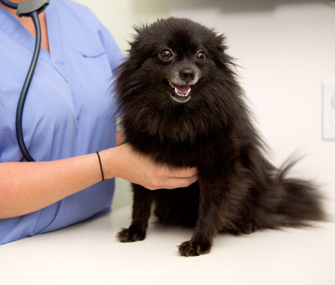Biography of a Biopsy: Do Tell All
Published on May 13, 2013

For a veterinary oncologist like me, a biopsy is the critical piece of information directing my treatment recommendations and determining the prognosis for your favorite fur person. To help you understand why this test is the most important one for a pet with cancer, I have written a short "biography" of a biopsy.
"Members" of the Family
Punch, wedge and needle core are all different methods of obtaining the biopsy specimen. No matter how the tissue is obtained, it is all submitted to the laboratory for processing and interpretation by a veterinary pathologist — a specialist whose expertise is in determining whether the sample is cancerous or benign. If cancer is found, the veterinary pathologist can usually determine its type and grade. I choose my method of biopsy based on the individual patient’s abnormality.
Dogs with a skin mass often get a needle core biopsy. Think of it like the core samples of soil taken by geologists on the National Geographic channel; each “layer” will tell us something more about what we have found. A special device, which is essentially a hollow needle, takes a long, thin piece of tissue out of the center of the mass. Needle core biopsies are usually very accurate and minimally invasive. No sutures are required.
A punch biopsy, on the other hand, is good for superficial, scaly skin lesions. A tiny, cookie-cutter-like biopsy gadget removes a small, round piece of skin. The hole requires just one suture to close. This is also a minimally invasive method. Wedge biopsies, which are more invasive, are sometimes called incisional biopsies. This procedure gets its name from the fact that it typically takes a wedge-shaped piece of tissue as a sample. Commonly, I recommend this type of biopsy for abnormalities of internal organs. Because these biopsies require more cutting and stitching than I like to do, I typically send a patient to a veterinary surgery specialist for a wedge biopsy.
Life History
A biopsy starts out as a piece of tissue from an abnormal part of the body: a lump on the skin, a swollen liver, a piece of moth-eaten-looking bone or minute pieces of intestinal lining obtained during an endoscopy. Endoscopy uses a special scope with lights, camera and a biopsy device to obtain samples from the lining of the stomach and intestines.
The sample first soaks for from a few hours up to a few days in formalin, a noxious solution which preserves the architecture and cellular structures of the tissue, affording the veterinary pathologist a snapshot of what the cells looked like at the time of the biopsy. Then, a multistep process embeds the tissue in wax and slices it into sections only a few microns thick. These wisps of tissue are placed on glass microscope slides and stained to help differentiate various structures within the tissue. Once stained, the pathologist looks at the tissue on a slide and writes a report, which is sent to the veterinary oncologist (me) who requested the biopsy.
Keep Your Characters Straight: Cytology Is Not Biopsy
A common test performed during an office visit is fine needle aspiration of a skin mass or enlarged lymph node. Worried owners commonly confuse this procedure with a needle core biopsy. A fine needle aspirate uses the same type of needle used to administer a vaccine or antibiotic injection, but instead of giving an injection, suction from the syringe attached to a needle is used to remove a few cells from the mass. These cells are then squirted onto a microscope slide and sent to a laboratory for staining and interpretation by a pathologist.The laboratory process for aspiration cytology is much simpler than for a biopsy, and the results are available more quickly, often within one to two days. Veterinary oncologists use cytology to “ballpark” a diagnosis. The most informative cytology results tell us the abnormality is first a tumor and then, second, may indicate which family of tumors it belongs to. Cytology does not provide as much information as a biopsy, but it helps direct the diagnostic evaluation, surgical approach or medical therapy. I often use cytology as a first line of diagnosis, and if I need more specific information about a tumor, I obtain a biopsy sample.
Biopsy: Not for Every Patient
Every medical procedure has pluses and minuses, and a biopsy is no different. My job is to weigh the risks and benefits of biopsy for each individual pet and make the best recommendation as part of an ongoing plan for diagnosis and treatment. Occasionally, biopsy is too risky.
One type of tumor where the risks of biopsy often outweigh the benefits is brain tumors. For obvious reasons, tumors deep in the brain are treated based on their MRI characteristics, without biopsy. However, tumors found on the surface of the brain can be removed surgically and the excised tissue submitted for biopsy. Another type of patient in which we would forgo a biopsy is one with a bleeding disorder due to fears the patient could lose a significant amount of blood as a result of the procedure. In these cases, we may need to use our best guess as to what tumor is causing the problem and treat accordingly. Fortunately, these situations are uncommon.
A biopsy is often the end of the diagnostic evaluation, but the beginning of the treatment phase for a pet with cancer. Once I know what tumor your pet has and how extensive it is, we can start the conversation about how best to get your dog or cat on the road to recovery. And that’s a story I always do my best to try and deliver a happy ending for.





